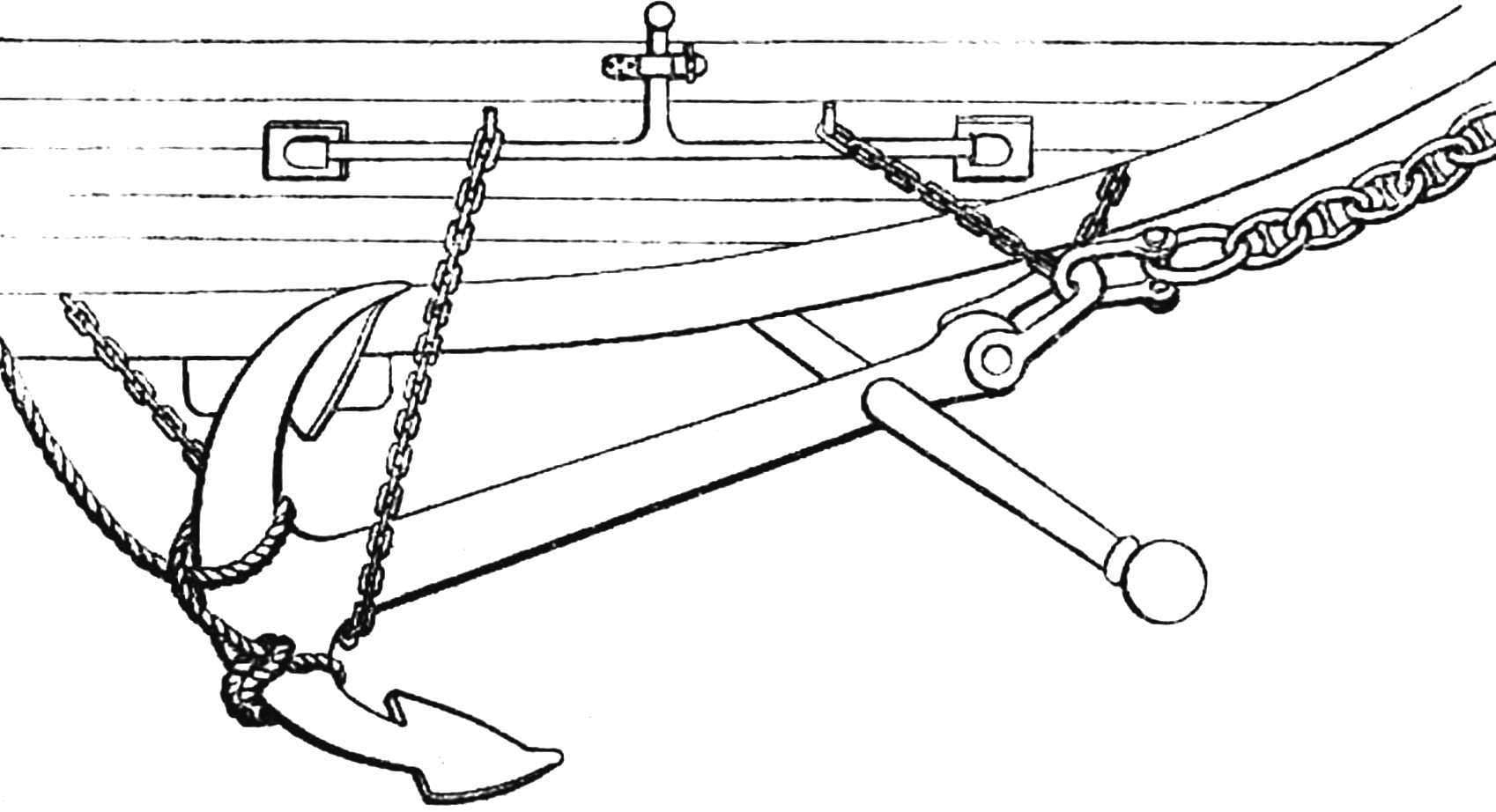 For rowing and sailing vessels of the middle ages was used cetarehwodie anchors-cats and the two-horned anchor with a wooden stock, like the Admiralty, which appeared in the second half of the XIX century. In Portuguese and Spanish caravels and Galiano, Dutch flutes, Venetian trabaccolo and other vessels anchor in the stowed position suspended and attached sling through a block under the bowsprit or primitives horizontally to plancher bulwarks, whose strength is in the area of the school has increased due to additional brackets. To lift the anchors on these ships are applied blocks, chain blocks, arrows, hand-windlasses and wooden bollards. Mistake is made by those modelers that are on the model of a sailing ship belonging to the period of the middle ages, doing crumbly and spire. History of shipbuilding proves that these devices anchor devices appeared only in the second half of the seventeenth milestone.
For rowing and sailing vessels of the middle ages was used cetarehwodie anchors-cats and the two-horned anchor with a wooden stock, like the Admiralty, which appeared in the second half of the XIX century. In Portuguese and Spanish caravels and Galiano, Dutch flutes, Venetian trabaccolo and other vessels anchor in the stowed position suspended and attached sling through a block under the bowsprit or primitives horizontally to plancher bulwarks, whose strength is in the area of the school has increased due to additional brackets. To lift the anchors on these ships are applied blocks, chain blocks, arrows, hand-windlasses and wooden bollards. Mistake is made by those modelers that are on the model of a sailing ship belonging to the period of the middle ages, doing crumbly and spire. History of shipbuilding proves that these devices anchor devices appeared only in the second half of the seventeenth milestone.
In the last century, the system of harvesting Admiralty anchor on the ship improved. Bulky wooden crumbly and Pentre-beams replaced the rotary iron cat and fish-beams. Later, to replace nm came the cranes, which were placed ia the tank of the ship and could be rotated freely in both directions. In the atom case, the shank of an anchor of steel to make the bracket, which laid the hook lifting hoists crane. Laid on the cheekbone or ka the deck of the vessel the anchor was fastened with two chains — bertoline and rostovom (the bracket and the lower part of the spindle). These chains with their end-links were placed in a special fixture on the foredeck of the ship, called “anchor machine”, or “rollers boatswain”. It greatly accelerated and facilitated the return of the armature. Spare Admiralty anchor is usually kept on the Pack is laid flat on the deck. When an atom of iron stock anchors were placed along the -spindle.

